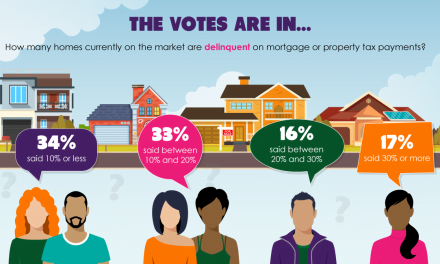2018 was a turning point in the current real estate business cycle, as the sales market transitioned from stable growth to declining volume.
2019 will certainly continue this downward trend for sellers, but agents who marshal their opportunities now by shifting their focus from sellers to the needs of buyers and mortgage lenders will weather the slowdown and eventual recession.
What else happened in 2018 to impact California’s housing market? Read on for a digest of:
- the most important legislative updates;
- how interest rates are impacting sales; and
- what type of progress home sales volume and prices made this year in California.
This digest is followed by first tuesday’s forecast for real estate in 2019 and beyond, and advice for agents on how to remain successful in the coming recessionary years.
2018 legislative updates
As outgoing governor Jerry Brown once said when vetoing a law: “not every human problem deserves a law.” And yet, when it came to new state housing laws, 2018 was another year for the books.
Some of these laws consist of updates to wording and clarifications on the finer points of forms — like with the changes to disclosure forms required in residential real estate transactions.
Some of these form changes include:
- replacing the antiquated terms “selling agent” and “listing agent” with the more consumer friendly “buyer’s agent” and “seller’s agent;”
- clarifying language in the required natural hazard disclosure (NHD) [See RPI Form 314];
- expanding protections for clients when their agent is acting as a dual agent; and
- adding more details and instructions into the Agency Law Disclosure. [See RPI Form 305]
Other new laws in 2018 build on 2017’s package of affordable housing bills, which were passed in response to the growing housing crisis.
For example, SB 828 encourages local governments to better meet regional housing need by re-defining how they determine regional need. This new law prohibits local governments from basing need on years when under-production of housing took place. Instead, locales will need to base need on the number of current low-wage jobs alongside the number of housing units available to low-income workers.
Another law that clarifies previous affordable housing efforts, SB 765, attacks the housing shortage by tightening exemptions that allow developments to receive streamlined approval when they include units for low-income households in their projects. Now, to receive streamlined approval, developers need to commit to setting aside units in their project for low-income households for at least 55 years for rented units and 45 years for owned units.
Related article:
New laws adjust planning, building standards in response to growing housing crisis
Glancing back even further, 2018’s legislative session saw the revival of the 2012 California Homeowner Bill of Rights.
This set of laws, revived by SB 818, puts a number of protections back in place for homeowners during the foreclosure process, an event likely to greatly increase as we move into the thick of this recession. For example, when a homeowner becomes delinquent on their mortgage, agents need to know that the lender, mortgage servicer or bank may not record a notice of default (NOD) for a trustee’s foreclosure unless 30 days have passed since contacting or making a diligent effort to contact the homeowner, including mailing a notice and calling at different times of day.
The Homeowner Bill of Rights also prohibits a mortgage lender from moving forward with the foreclosure process while a homeowner’s complete loan modification application is pending review. Also of note, lenders need to assign homeowners a single point of contact during the process so their agent knows who to talk to assist the homeowner.
Several other protections were re-instated by California’s Homeowner Bill of Rights. Read more here.
Interest rates in 2018
The Federal Reserve (the Fed) was busy in 2018, increasing their benchmark interest rate four times over the course of the year.
As a result, mortgage interest rates inched higher in 2018. For example, the average 30-year fixed rate mortgage (FRM) rate rose from 3.85% in December 2017 to 4.55% in December 2018, an increase of 0.7 percentage points. Translated to purchasing power, the increase in FRM rates alone meant homebuyers at the end of 2018 had a significantly smaller portion of their money payment remaining to apply to mortgage principal. Put another way, a homebuyer taking out a $500,000 mortgage today is spending 12% more on monthly payments than they would have a year earlier due solely to today’s higher FRM interest rate.
Therefore, today’s homebuyer acts in one of two ways. They can either:
- increase their mortgage payment (relative to what it would have been under the lower rate) to qualify with the same down payment for the same-priced home at today’s higher interest rates; or
- stick with the same mortgage payment by paying a reduced purchase price for the same type of property.
As homebuyers are only able to qualify for smaller (maximum) mortgage principal amounts as rates rise, some will be able to qualify to pay higher mortgage payments and thus qualify to pay last year’s price for the same type of home. However, homebuyers operating at the top of their budget will typically seek to purchase the same types of property, but at a lower price.
When interest rates rise, first homebuyers become discouraged and home sales volume slows. Then, as homes sit longer unsold and price cuts become more common, price momentum slows and soon reverses course.
As interest rates have increased at a steady long-term clip since late-2017, the impacts are already being felt across California, in slowing sales volume and declining prices. Expect these effects to continue for around another 20 to 24 months.
Related article:
Home sales trail off by year’s end
Both home sales volume and prices experienced trouble in 2018. They peaked for this business cycle, and began to decline in all three tiers of home prices.
California home sales volume started off 2018 roughly level with the year before, a flat state of affairs which has persevered since 2014. However, beginning in June, sales volume began to trend down, first gradually, then accumulating to an avalanche in lost sales by year’s end.
While sales volume reports are not yet in for December 2018, they are on track for the year’s sales volume to be 4% lower than 2017, amounting to about 18,500 fewer sales overall.
Meanwhile, prices in California rose through the beginning of 2018, only to reverse direction beginning in August. The most recent home price reports show home prices are still higher than a year earlier, but more significantly, home prices are presently declining on a month-to-month basis.
As of October 2018, California home prices average:
- in the low tier, 7% higher than a year earlier (and 0.5% lower than the previous month);
- in the mid tier, 6% higher than a year earlier (and 0.6% lower than the previous month); and
- in the high tier, 5% higher than a year earlier (and level with the previous month).
Prices have begun to fall back consistently due to several economic factors pushing the housing market toward its own recession, likely to set in around mid-2019 with declining sales volume. Chief among these factors are rising interest rates, which have reduced buyer purchasing power and priced-out buyers which have caused home sales volume to dramatically slow.
Forecast for 2019 and beyond
What’s ahead for California’s housing market?
As interest rates continue to rise in 2019 — and the Fed is likely to increase their key rate once more this year — the effects will ripple throughout the entire real estate market. Think capitalization (cap) rates, and consider that they have been far too low for the risks involved in owning illiquid assets during slower economic times.
Of course, once an economic recession is imminent, the Fed will pull their foot off the rate-increase pedal and reduce short-term interest rates for a time. Looking forward, by 2020 homebuyers and sellers will only see slightly lower mortgage interest rates, and in 2021 they will remain low only if the Fed steps into the mortgage origination void that is likely to take place, somewhat like it did in 2009. By then, the bond market will likely drive up interest rates and thus secondary mortgage market interest rate demands – unless the Fed steps in to supply cheap mortgage money again.
Meanwhile, home sales will continue to decrease in 2019, slowing the flow of agent and MLO fees. The aftereffects of the rapidly rising prices experienced since 2012 and recent rising interest rates, along with uncertainty brought on by chaotic economic and trade policies, have further discouraged potential homebuyers and helped derail sales. first tuesday is forecasting 2019 home sales volume will decrease around 15% from 2018, continuing an even greater 10% drop in 2020 before rebounding in the years following.
Annual home sales volume won’t rise again until after home prices bottom and interest rates cool during the coming business recession, initially coaxing speculators and then homebuyers back into the market.
The cyclical peak in home prices has now occurred. When spring rolls around this 2019, we will see a meager month-to-month uptick in sales and pricing, but this increase will be brief and shallow and not reach the levels of one year prior. The overall trend for the next couple of years will be downward as we head into the next recessionary period: 2020.
first tuesday forecasts home prices will decrease 10%-13% in 2019 alone, and by the time prices bottom heading into 2021, they will have dropped:
- 35% in the low tier;
- 25% in the mid tier; and
- 20% in the high tier.

This chart shows average California home price movement in the three price tiers, along with the mean price trendline, the blue line. This line represents the mean price to which home prices cyclically return. It is determined by the amount homebuyers are able to pay for homes, largely influenced by average income increases, around 3% annually.
Each recession typically sees a dip in prices, returning them near to the trendline. first tuesday forecasts prices will hit this trendline in the winter of 2020-2021, rebounding in spring 2021.
Advice for agents in 2019
Our best advice for agents in 2019 is to treat every transaction like it may be your last. While this dire situation certainly won’t be the case for determined and persistent agents, this attitude will help you to save cash, a condition that will allow you to work smarter to diversify your professional efforts.
Save more of today’s fees for the rainy days ahead by:
- cutting costs where possible;
- resisting the urge to spend more money than you need to on upgrading or purchasing assets (capital outlays); and
- reducing your living standards and setting aside the savings in a rainy day fund.
While you’re saving, invest more time (and hopefully not too much money) expanding your client base of prospective buyers and mortgage lender personnel in foreclosure departments to make a profit in 2019-2020, even when the market is down. Expand your base by:
- focusing services on the needs of homebuyers in a down market, not sellers who will be in long supply and tough to deal with as they unsuccessfully attempt to sell at prices above market value;
- becoming a short sale expert focused on the needs of mortgage lenders facing increased foreclosures;
- learning about other transactions that will become more common in the coming recession, such as carryback financing, exchanges and investor/speculator buyer mentality in recessionary markets;
- taking on property management opportunities as demand for this service will rise all across the real estate market;
- reaching out to renter populations, informing them about financing available to future homebuyers and market conditions for timing a purchase to take advantage of pricing before the inevitable market turn-up in a recovery; and
- increasing your civic involvement to build recognition among local peoples and general trust to your personal brand – write a column for the local weekly newspaper or real estate journal.
Buyer’s agents can prepare their clients to meet resistance from sellers who will be under sticky price illusions. Many sellers will need to see multiple offers before they decide to succumb to the pull of downward trending prices, or pull their listing until prices rise again.
Don’t shy away from a challenge in 2019, as real estate professionals cannot afford to be picky in a down market. Listing agents are certain to be overworked and underpaid. Plenty of agents, brokers and other real estate professionals survived the 2008 recession, and you can survive the next recession, too. The good news is our 2020 recession is not anticipated to see the same amount of panic and extended depression as in 2008-2009.
Real estate professionals who are persistent, hard-working and creative will survive the coming years stronger, and with an intellectually wider skillset. The trick is to prepare today, seizing forward opportunities as they present themselves.
Related article:















All the “journalists” for first tuesday are social justice warriors who are upset Trump is president. A declining economy is the only chance they have at beating Trump in 2020.
Their political bias is so strong they are happy to write articles which completely destroy their credibility.
So right – no real knowledge of the industry as all.
where on earth and who on earth had come up with these numbers stating that prices will decrease 10-13% in 2019 alone and then by 2021 they will have dropped 25% for mid tier and 35% low tier and 20% in high tier.
Let me grasp this better : An 800k valued home today as I sit and type will be about worth between about 696k – 720k. Then by 2021 the same home will erode to a value of about 600k.
I believe a recession will happen and interest rates may go up higher and home prices have gone up for more years than perhaps is statistically the norm and thus we are due for a slowdown or a dip, YET I have reached out to prominent realtors (the best in the biz) in various parts of CA…. and nobody buys this !!! Forbes article in end of December cited that home shall appreciate 3% in 2019 and the millenial buying spree will not even peak for over 1+ year.
So, not only an unbelievable pessimistic view, yet where on earth do these values come from ? Sure, in many counties the pocket of buyers who can afford a median priced home is on the lower end, yet this article calls for what could be called a CRISIS where large portion of equity lost would put folks again under water, especially for anyone who has bought a home in the past few years..
lets get more comments here….
i AM A 36 YEAR REAL ESTATE BROKER IN cA. fIRST TUESDAY IS ALWAYS WRONG..
tHEY NEED TO BECOME BUDDHIST TO GET A CHECK ON THEIR EGOS.
So foolish to be pessimistic as the author is. There is optimism with other economic sectors.